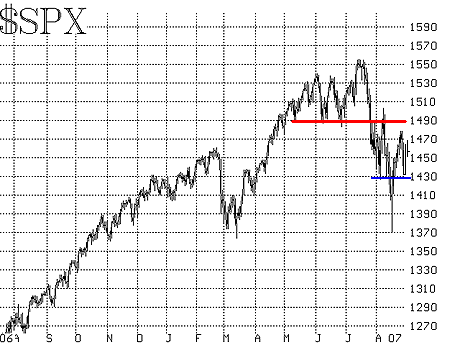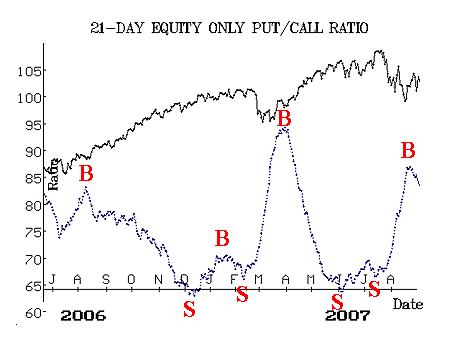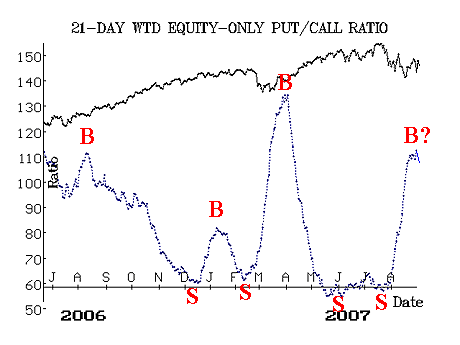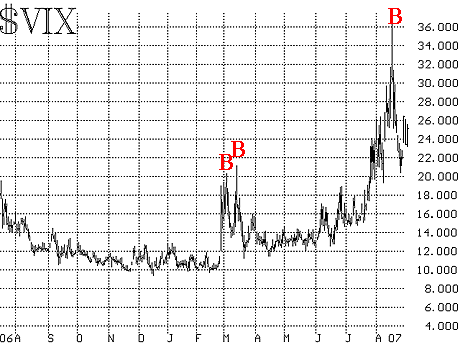Whatever this market holds in store, it will probably be known fairly shortly after Labor Day. Perhaps at the risk of over-simplification, this is how we see it: as long as $SPX continues to close below the 1480-1490 resistance level, there is a bearish bias and downside potential to this market. But if the upside breakout does occur ($SPX above 1505; $RUT above 804), then an intermediate-term bullish move should occur.
$SPX has had a very volatile week. Last Friday, it concluded a week of rallying by reaching 1480 before plummeting rapidly to 1430 this week. Those two numbers outline a very volatile trading range within which the index is temporarily confined. Both have some history. 1480 and 1490 were support areas during the bull market earlier this year and have now transformed into resistance areas over the past several weeks. Similarly, 1430 was a support area before the August 16th plunge and recovery.

We think an $SPX close above 1505 would signal an all-clear to the upside, although it may merely take a two day close above 1490 to accomplish the same thing.
But what if$SPX falls back below 1430? Then a bull-blown retest of the 1407 closing lows and or the 1370 intraday lows will likely be in store. And if they don't hold, then a true bear market will be underway.

The equity-only put-call ratios are turning more bullish than they've been in a long time. The standard ratio has already given a buy signal, and the weighted ratio is just about ready to confirm one as well. This, of course, is important from an intermediate-term viewpoint, and if the upside breakout does occur, these important indicators look to be ready to confirm it.

Market breadth has been all over the place. The massive oversold condition of mid-August was completely dissipated by the next week's rally. In a topic we'll cover more in depth in next week's newsletter, there were back to back "90% days" this week. Volatility indices ($VIX and $VXO) remain very elevated, trading near 25 most of the time. In general, that's not bullish. In a true bullish scenario, $VIX would be declining, even on days when the market falls. Since that's not happening, we rate $VIX as a somewhat negative indicator, although it's important to watch the relationship between $VIX and the September futures.

In summary, there is a lot going on in this market. It is almost meaningless to make long-term projections because things can change quickly with volatility so high. But, in general, we remain skeptical (mildly bearish) unless an upside breakout occurs. If it does, only then would we be prepared to change to the bullish camp.
Lawrence G. McMillan is the author of two best selling books on options, including Options as a Strategic Investment, recognized as essential resources for any serious option trader's library.